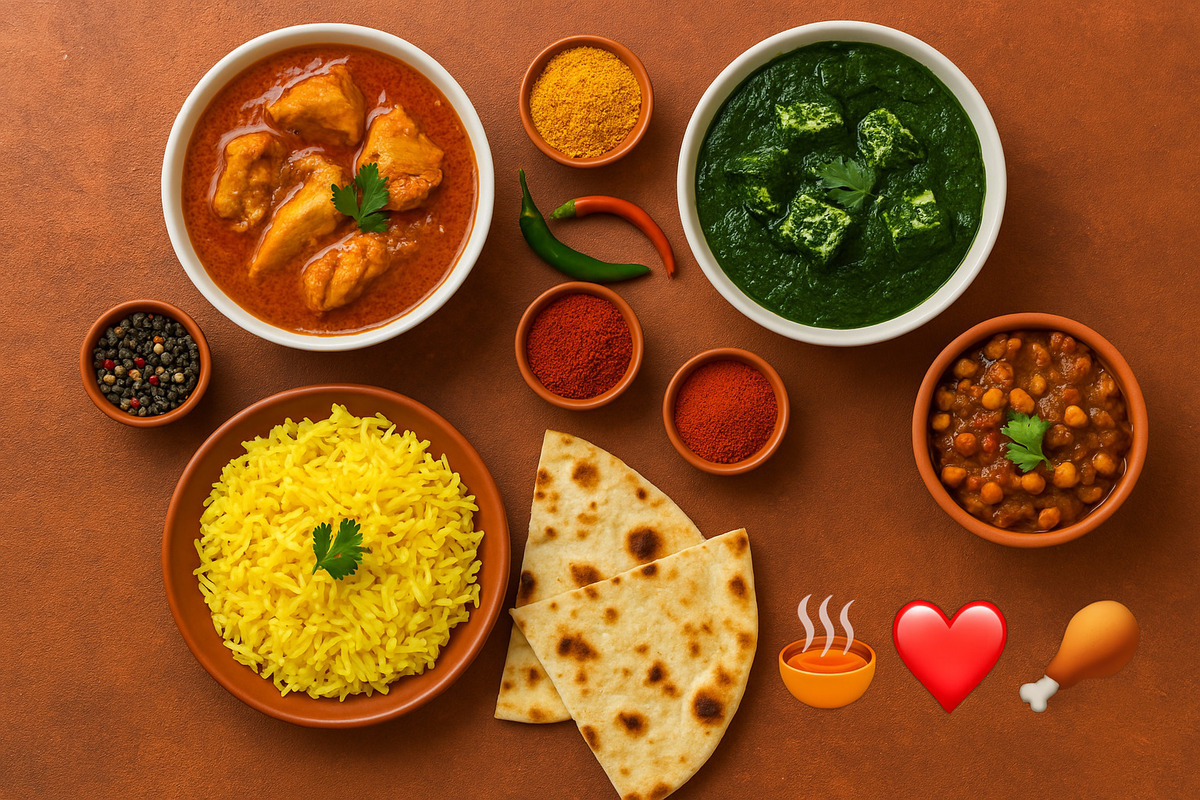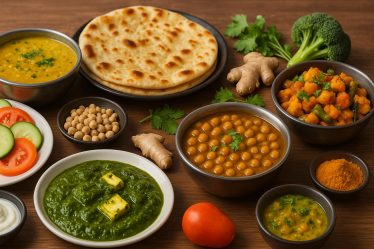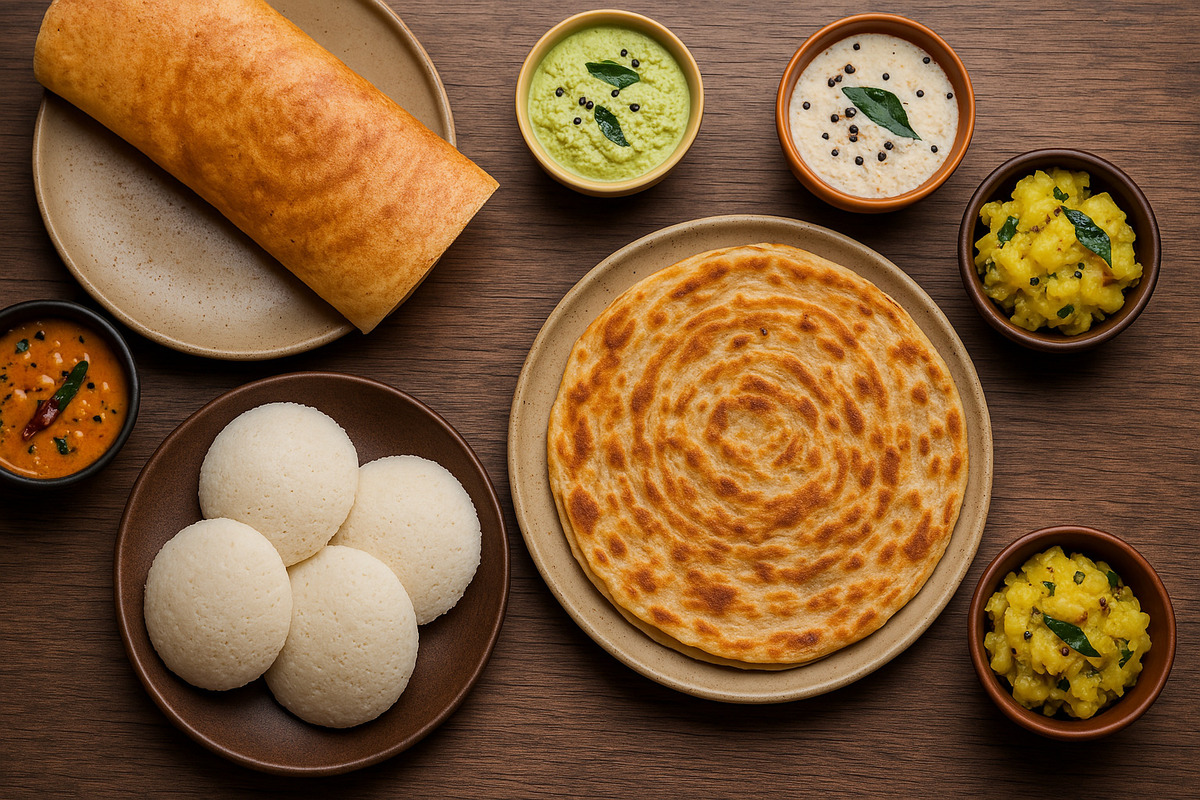
Indian cuisine wins on the internet because it satisfies two core ingredients of viral content—visual drama and emotional memory. Bold colors, complex textures, and layered flavors translate into irresistible food photography and short-form videos. More than just aesthetics, Indian food tells stories—of family, street stalls, festivals, and rituals—that audiences worldwide connect with deeply.
Why Indian Food Works So Well Online
1. Color is content.
A single thali can showcase a palette that rivals a Holi celebration. Deep orange curries, vibrant green chutneys, blood-red pickles, and golden-brown naans—this variety makes food scroll-stopping. Indian dishes don’t need filters. They bring their own saturation.
2. Complexity invites curiosity.
Butter chicken isn’t just chicken in sauce. It’s marinated, grilled, simmered, and layered with cream and spice. Biryani isn’t rice—it’s a suspenseful reveal under a dough-sealed lid. This complexity fuels content formats from step-by-step reels to multi-camera cooking breakdowns.
3. It’s both local and global.
Paneer tikka in Paris. Masala dosa in Melbourne. Chole bhature in Chicago. The diaspora has carried Indian food across borders, and with it, the hunger for content. Social media recipes, restaurant reviews, and mukbangs reach global audiences who may never have stepped into an Indian kitchen.
Indian Street Food: The Gateway Drug
Street food is the heart of India’s online food identity. Fast, flavorful, messy, and cheap—it ticks every box for viral content.
Most Popular Street Foods That Go Viral:
- Pani Puri – The suspense of the crunch, the burst of tamarind water, and the sheer mess make it video gold.
- Vada Pav – Mumbai’s burger tells a political and cultural story in every bite.
- Dabeli – Sweet, spicy, nutty, and soft—all in one bun. The sprinkle of pomegranate seeds turns it into clickbait.
- Jalebi – The hypnotic swirl as it fries draws in millions of views. The syrup pour seals the engagement.
These dishes aren’t just eaten—they’re performed, and that performance goes global in seconds.
Social Media Fuels Cravings
Platforms like Instagram, TikTok, and YouTube Shorts thrive on food content. Indian cuisine has adapted quickly to this format—recipes in under a minute, ASMR street food compilations, and dramatic before-after plating transitions.
Even how people talk about food has shifted. Emoji combinations like 🍛🔥🤤 or 🫓🧅🥵 are shorthand for taste intensity and mouthfeel. These emojis travel across languages, shaping perception and engagement with Indian food worldwide. The visual language adds a new layer to how flavor is communicated digitally.
Fusion, Remix, and Reinvention
Creators online aren’t bound by tradition. They remix dal into tacos, wrap kebabs in sushi rice, and infuse chai into tiramisu. Purists may cringe, but the format works—it makes Indian food feel accessible to audiences unfamiliar with it. At the same time, it sparks debates that fuel engagement.
Even local staples like khichdi get glam makeovers with truffle oil and microgreens. Biryani becomes a burger. Naan turns into pizza crust. These aren’t gimmicks—they’re gateways.
Influencers Leading the Charge
Some of the biggest Indian food creators now operate on a global scale:
- Ranveer Brar brings technique and storytelling.
- Kunal Kapur mixes tradition with home-style ease.
- The Modern Desi showcases vegan twists on South Indian dishes.
- Your Food Lab delivers high-energy street food series.
These influencers tap into diaspora nostalgia, local pride, and food-as-performance all at once.
The Future of Indian Food Content
Expect sharper storytelling, regional deep-dives, and more street vendors becoming influencers themselves. Hyper-local content—like toddy shop meals in Kerala or tribal food in Jharkhand—is finding its voice.
Indian food content isn’t a trend. It’s a cuisine of continuity and chaos—ideal for the internet. It feeds not just the appetite, but the algorithm.


